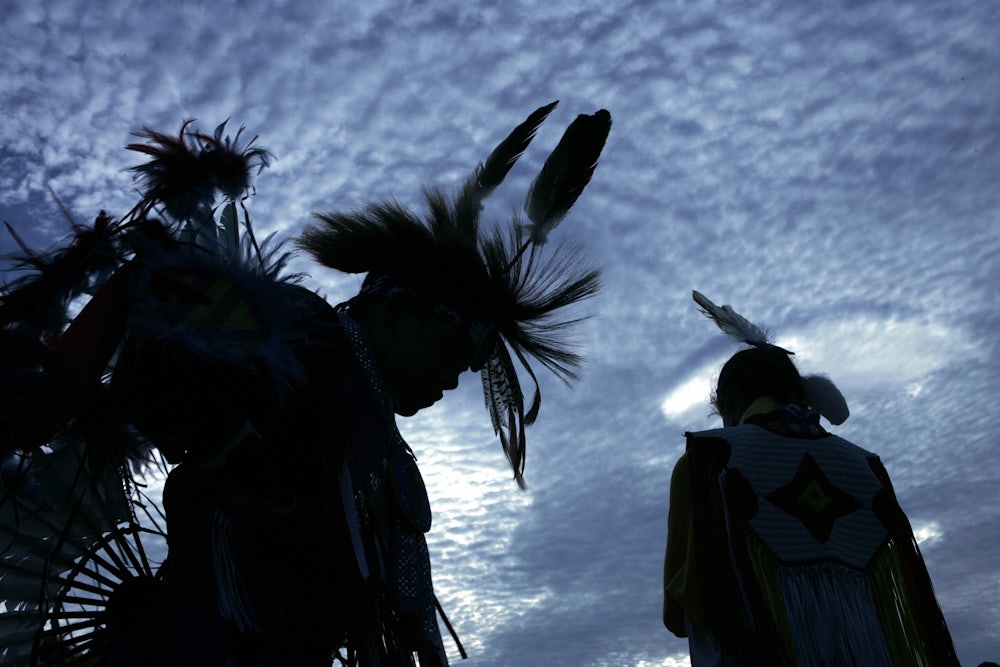I’m a senior this year at a high school in Wake County, which is the largest public school district in North Carolina. I’m also a member of the Lumbee Tribe. And this year, the Wake County Board of Education officially recognized Indigenous Peoples’ Day for the first time, thanks in part to a speech I gave last fall.
I have always been the only Native person at my school, or any school that I’ve been in. In that kind of situation, sharing your experience and your tribe with others isn’t easy, especially since I’m not really an outspoken person. But I’ve been a member of the Wake County Indian Education Program since my family moved here when I was in second grade, which helps. Our program is pretty diverse. Knowing that there are other people like me, and being able to talk to them has helped a lot. Without them, I don’t think that I’d have the amount of confidence I do now in my identity.
It was through the program that I had the opportunity to speak about recognizing Indigenous Peoples’ Day in front of the county Board of Education in October of last year. I spoke along with two other students and a few parents. I had a video that I had made featuring all of the tribes in North Carolina and a little bit about them. I was originally supposed to just present the video, but there were some technical issues, so I ended up giving a speech. “As one of the only Native students in my school,” I told the board, “the role of educating students and teachers about Indigenous peoples, our cultures, and our experiences often falls on me. If Indigenous Peoples’ Day and American Indian Heritage Month are officially celebrated in our schools, less of this burden will fall on students like me.”
The wider movement to recognize Indigenous Peoples’ Day has taken a long time. North Carolina does recognize it, as a state, but different towns and cities and schools don’t, or they’ll also recognize Columbus Day alongside it. Columbus Day adds to the narrative that American history started in 1492. It erases a lot of our culture and our history. There’s also the fact that Columbus and the people who he sailed with were just very bad people.
We didn’t hear back from the board after our presentation. Personally, I was a little on the pessimistic side about what their response would be. But then, last week, almost a full year later, the board issued the proclamation and made it official. (The board concluded its proclamation by writing, “All schools in the Wake County Public School System are encouraged to support the well-being and growth of American Indian and Indigenous students every day, and especially recognize the contributions of Native Peoples on Oct. 12, 2020, Indigenous Peoples’ Day.”) We found out about it at the same time as everyone else. It was really surprising—in a good way!
The thing is, the proclamation has to be a first step for the schools. The education on Indigenous peoples that we’re given in school isn’t that great, holiday or not, and our schools aren’t really taking steps toward fixing the curriculums, which then makes it feel like it’s my responsibility. But it’s not.
In elementary school, my dad would come to my class to talk with my classmates. Part of the response from them was because they were elementary schoolers, but people would say stuff like, “I have Cherokee blood,” or comment about all Native people riding horses and teepees. One time, my dad asked what anyone knew about Indian people, and someone said, “They didn’t wear clothes,” which, I guess, was kind of funny? I also remember, in third or fourth grade, that we watched a video about Christopher Columbus. It showed him and his men on their boats and how they were sailing to the New World. It ended right before he got here—before they met any of us.
I’m a senior now. I’ve taken American history at several stages throughout my time in school. And I don’t really think that we’ve learned, in any history class, about Native people at any point after the nineteenth century. What we learned about Indigenous people is always super limited and vague. And it’s always past tense, if it’s there at all.
I understand that a lot of the off-putting things that people usually say or ask about us, even if they don’t mean to be rude, is because of misinformation and ignorance, not necessarily because of hatred. We need to be taught—in school, specifically, where we’re currently located—things like: Are there Indigenous tribes who still live there? And if there aren’t, why? Indigenous literature should be assigned. The American Indian Movement was super influential, but we never learn about it. A lot of contemporary Native culture and Native issues just aren’t taught, which is why we’re still facing the issues that we’re facing today. This lack of education leads to a real lack of empathy.
I don’t know if it was necessarily that I was ashamed of my culture because of the experiences that I’ve had in school, but for a long time, I was not confident in sharing it with others. Through my experience in front of the board, I’ve gained that. And, importantly, I learned how to present my cultural identity in a way that makes me comfortable, instead of in a way that makes other people comfortable.
